Starcraft 2 Zerg Unit Guide
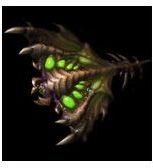
Starcraft 2 Zerg Unit Guide - A Bunch of Bugs Lead by a Crazy Woman
The Zerg have had an interesting history. Originally they were controlled by a single massive intelligence called the Overmind. This creature controlled the Zerg hoard throughout the galaxy and used it to crush Terran and Protoss colonies alike. But the Overmind was eliminated in Starcraft, and in the place of the Overmind rose one of the newest and most intelligent creatures added to the Zerg horde - a human psionic named Sarah Kerrigan.
While Kerrigan is now in control, the basics of the Zerg horde remain the same as in Starcraft. The Zerg have cheap units which are easily to lump into massive hoards which can stomp around the map. The Zerg also is very mobile, with many faster units and many ways to harass an opponent. This guide covers Zerg units and provides in-depth information and tactics about the units in the game. If you’re a Zerg player who is having trouble with the complexities of the Zerg hoard you’ve come to the right place.
Brood Lord
-
Cost: Minerals 150 / Vespene 150
-
Supply: 4
-
Build Time: 34
-
HP: 225
-
Attack: Ground 20
-
Special Ability: Spawns Broodlings
-
Type: Armored Biological Massive
The Brood Lord is a gigantic flying creature. It has 225 hitpoints, which is decent, and is considered armored. It on the whole a tough unit to take down for the Zerg, since Zerg units do tend to be relatively inexpensive. Of course, that is probably because the Brood Lord isn’t relatively inexpensive. The Brood Lord is a tech tier 3 unit which requires that the Zerg build multiple buildings in order to gain access to the Brood Lord, and the Brood Lord itself is morphed from Corruptors, which aren’t cheap themselves.
With that said, it is easy to see why the Brood Lord is expensive. Against both Protoss and Terran the Brood Lord is a very nice end game unit. The range on the Brood Lord is extremely long, allowing the Brood Lord to do substantial damage from very far away from the battle. Worse for the Protoss and Terrans, their most direct counters to the Brood Lord are at this point going to be very weak to your own army, assuming that you have decided to include a decent number of Hydras in your army. The Brood Lord is a must have for any siege against a Terran or Protoss late game defense.
Corruptor
-
Cost: 150 Minerals / 150 Gas
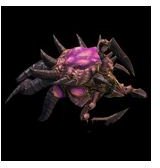
-
Supply: 2
-
Build Time: 40
-
HP: 200
-
Attack: Air 14 +6 vs. Massive
-
Type: Armored Biological
The Corruptor is a Zerg anti-air unit with a pretty unique trait - it does extra damage to massive units. This includes units like the Battlecruiser, and the Mothership. It should also be noted that while the Protoss Colossus is a ground unit, it is so tall that the game considers it aerial, so Corruptors can in fact attack the Colossi as well and enjoy a very nice bonus to damage against them. As if the bonus against massive units wasn’t enough, the Corruptor also has a special ability called Corruption. This ability causes an enemy unit to receive 20% more damage. This also can bring down tough enemy units much quicker.
The downside of the Corruptor is its very specific role as an anti-air unit. The Corruptor makes it very easy for a Zerg player to gain air control if his opponent does not spot the fact that the Zerg player is building them, but the Corruptor is not going to be able to make contributions to ground battles. It is rather unique in that, because the Protoss Phoenix can at least disable enemy units while the Terran Viking can transform into a walker.
Of course, if the enemy does have a strong ground army you can morph Corruptors into Brood Lords, which are great against ground targets.
Hydralisk
-
Cost: 100 Minerals / 50 Vespene
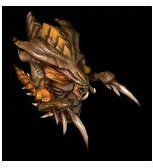
-
Supply: 2
-
Build Time: 33
-
HP: 80
-
Attack: Ground / Air 12
-
Type: Light Biological
The Hydralisk is a light unit which is extremely versatile and has decent range. It is something like the Protoss Stalker or Terran Marine - an all purpose unit which is not overly strong in any particular area but has few major weaknesses as well. The Hydralisk is quite cheap to build, and can be obtained quickly if you choose to simply tech up. It can be used to overrun both Terran and Protoss players who aren’t expecting it early in the game, and the Hydralisk’s anti-air ability counters a fast tech to air units, a strategy which is popular and which can absolutely trash Zerg players who decide to go for mass Roaches.
The main weakness of the Hydralisk is area-of-effect damage. With only eighty hitpoints, the Hydralisk isn’t a very though unit for the cost, and like most ranged units the Hydralisks will lump together in a sort of firing line if not micro-managed to an insane degree. Terran Siege Tanks and Protoss Colossi absolutely love to burn down Hydralisks who are lumping together in order to attack. You also need to watch for Protoss High Templar - their psi storms will ruin your Hydralisks quickly.
Infestor
-
Cost: 100 Minerals / 150 Vespene

-
Supply: 2
-
HP: 90
-
Attack: N/A
-
Type: Armored Biological Psionic
The Infestor is a pure caster unit capable of significantly disrupting enemy forces. Offensively, the Infestor can use Neural Parasite and Fungal Growth. Neural Parasite is a mind control attack which can be used to take over an enemy unit. It is a channeled ability, which means the Infestor can’t do anything else while the Neural Parasite is being used. Even so, it is a wonderfully effective ability against Protoss players, who often have a few critical units like Immortals or Colossi which are tearing your army apart. Using Neural Parasite on one of these units can turn the tide of a battle.
Fungal Growth is an area of effect ability which immobilizes enemy units in range and deals damage. It is effect against any large mass of ground units, including Terran bioball armies of Marines and Marauders and also virtually every Zerg army you’ll ever encounter. Fungal Growth is particularly effective when used in conjunction with Zerglings, which can surround the immobilized army and prevent it from escaping even after the Fungal Growth wears off.
Finally, Infestors have the Frenzy ability. This ability can target one biological unit and give that unit a 25% bonus to damage. The unit also is immune to snare, stuns, and mind control. Because Zerg units tend to operate and hoards of less powerful units this ability is best used on a Brood Lord or an Ultralisk.
Mutalisk
-
Cost: 100 Minerals / 100 Vespene
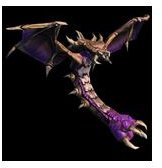
-
Supply: 2
-
Build Time: 33
-
HP: 120
-
Attack: Ground/Air 9
-
Special Ability: Attack “bounces” up to three times to hit multiple targets. Does 30% less damage each bounce.
-
Type: Light Biological
The Mutalisk is a favorite Zerg air unit capable of attacking both ground and air units. It is well loved not only because it is versatile, but also because it is very fast and very easy to accumulate in large numbers. While the Mutalisk is not a very tough unit it can be used effectively even against enemies who have a decent amount of anti-air ground units simply because the Mutalisk is so fast that it can hit a target and fade away before the enemy ground force can respond. A transition into mass Mutalisks is common for mid-level Zerg players, and is worth using, although it should be noted that smart players will be anticipating this if you do not attack them with many ground units in the early game.
The weakness of the Mutalisk is enemy anti-air units, which tend to be very effective. The Protoss Phoenix is a complete terror against Mutalisks, and the Viking isn’t bad either. Against Zerg players you might also run into trouble against Corruptors, but your main problem with be Hydralisks. Mutalisks should be kept away from any large mass of ground units which can attack air, as they will quickly shred the Mutalisk.
Overlord
-
Cost: 100 Minerals
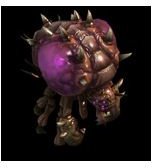
-
Supply: Provides Supply
-
Build Time: 25
-
HP: 200
-
Attack: N/A
-
Type: Armored Biological
The Overlord is unique in that it is both the Zerg method of obtaining more supply and is also a mobile unit which can be used as part of the Zerg army. In its standard form, the Overlord has one special ability, Generate Creep. This ability allows the Overlord to spew creep on any part of the map while the Overlord is not moving. Zerg units move quicker on creep, and Overlords can be used as part of a “Creep Highway” which allows your units to reach the enemy quicker. Also, enemies can’t build on creep, so sending an Overlord to spew creep where an enemy would set up an expansion is very useful.
Overlords can also be upgraded to carry air units. When given this ability, along with research which increases their speed, Overlords are an effective way to strike enemy lines. Just remember that losing an overlord also decreases your supply, so if you use them poorly and get them killed you could become supply-blocked and unable to build more units until you build more Overlords.
Overseer
-
Cost: 50 Minerals / 100 Vespene
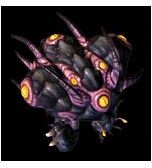
-
Supply: Provides Supply
-
Build Time: 17
-
HP: 200
-
Attack: N/A
-
Type: Armored Biological
The Overseer is created by morphing an Overlord. It provides no more supply, but it moves more quickly and has the very crucial Detector ability. This allows the Overseer to see cloaked enemy units. The Overseer also can spawn a Changeling. The Changeling takes the form of an enemy unit, allowing you to walk into his base and scout. The Changeling only has five hitpoints and no offensive abilities.
As of patch 13, the Overseer has two new abilities - Infested Terran and Contaminate. Infested Terran spawns an Infested Terran, a ground unit roughly on par with a Marine. The Infested Terran isn’t going to be turning the tides of battle, but these can be used to harass enemy worker lines by spawning them inside the enemy base.
Contaminate is an ability which allows the Overseer to spew crud all over an enemy structure. The structure can’t train units or research upgrades for 30 seconds. This is a great way to punish an enemy who has not built sufficient anti-air.
Queen
-
Cost: 100 Minerals
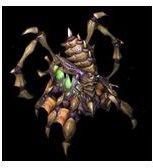
-
Supply: 2
-
Build Time: 50
-
HP: 175
-
Attack: Ground 8x2 / Air 9
-
Type: Biological Psionic
The Queen is a critical Zerg unit which provides early game defensive abilities and which also is an important part of Zerg production. As a defensive and offensive unit, the Zerg Queen is very effect due to having a very large number of hitpoints for a unit which can be built very early in the game and the Queen’s versatility. While most players will only want to build one Queen per Hatchery in order to take advantage of the Queen’s production benefits, building multiple Queens can be an effective strategy if you scout a Protoss player going for super-early Void Rays or a Terran player going for a Banshee rush.
Queens have several special abilities. The most important is Spawn Larva. This ability targets a Hatchery and spawns for additional Larva, which can then be transformed into Zerg units. This dramatically increases the Zerg production rate and is part of the reason why the Zerg can field so many units so quickly. The Queen also can create Creep Tumors which spread the Creep. Finally, the Queen has an ability called Transfusion which heals a Zerg unit or building for 125 hitpoints. This is defensively very strong and can help a Spinecrawler defense hold again an enemy attack.
Roach
-
Cost: 75 Minerals / 25 Vespene

-
Supply: 2
-
Build Time: 27
-
HP: 145
-
Attack: Ground 16
-
Type: Armored Biological
The Roach is a short range armored ground unit. The Roach is one of the few Zerg ground units which is actually individually tough, and the Roach also does a lot of damage considering how much the unit costs. Rushing Roaches early on can be an effective way of overwhelming enemy players, particularly Protoss players who are not transitioning into a Robotics Facility and Terran players who are not transitioning into a Factory or building too many Marauders (though to be fair, most Terran players do build a ton of Marauders). The Roach’s toughness is further enhanced by the ability to regenerate health while burrowed. This allows the Roach to be a real pain in the butt if your enemy doesn’t have any detectors yet.
Because the Roach has no air attack it is of course very weak if your opponent does manage to transition to a large air army. The Roach also is very weak against units which are built to destroy armored units. The Terran Siege Tank (even in assault mode) and the Protoss Immortal will both absolutely ruin your Roaches. Still, Roaches are a good compliment to Hydralisks in the late game because their large number of hitpoints allows them to act as tanks. Hydralisks have longer range and so can hide behind the Roaches.
Ultralisk
-
Cost: 300 Minerals / 200 Vespene
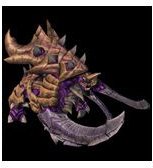
-
Supply: 6
-
Build Time: 70
-
HP: 450
-
Attack: Ground 15 +20 vs. armored with limited splash damage
-
Special Ability: Attack Ground 75 vs. Structures
-
Type: Armoed Biological Massive
Ultralisks are basically living tanks. Their huge number of hitpoints combined with a strong melee attack that includes splash damage makes Ultralisks something to be feared on the battlefield. They are most effective against armies of lighter units which bundle together. Marines are a good example, as are Hydralisks and Protoss Zealots. If you see an opponent massing any of these, throwing some Ultralisks into your unit mix could tip the battle into your favor.
Zergling
-
Cost: 50 Minerals
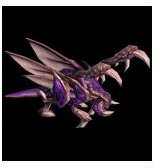
-
Supply: .5
-
Build Time: 24
-
HP: 35
-
Attack: Ground 5
-
Type: Light Biological
The Zergling. The unit which was responsible for the phrase “OMG ZERG RUSH!” The Zergling remains a very fast and rushable unit in Starcraft 2. It is one of the fastest melee units in the game, and becomes even faster when upgraded with the Metabolic Boost upgrade, at which point many players refer to Zerglings as “Speedlings.” Individually, Zerglings are very weak, but their speed and numbers makes it easy to infiltrate an enemy base in the early game if they were not smart enough to block their ramp. Zerglings are most effective when they can surround opponents and least effective when facing opponents in at a choke point.
Because the Zergling is so easy to kill, massing Zerglings is a strategy that can be easily countered by any area of effect attack. Zerglings are also very weak against many of the area of effect special abilities which exist in the game, such as psi storm and fungal growth. This means it is relatively rare to see players go with mass Zerglings in the mid game, but it can be an effective strategy. For example, if you can fool a Protoss player into building Immortals you can absolutely devastate his army with your superior numbers. Mid-game Zerglings are less effective against Terran players, who often have their own large army of Marines and Marauders, and Siege Tanks really make life hard for Zerglings.
Baneling
-
Cost: 25 Minerals / 25 Vespene
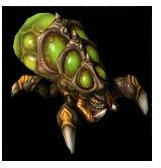
-
Supply: .5
-
Build Time: 20
-
Attack: Ground 20 +15 vs. Light with splash damage
-
Special Ability: Attack Ground 80 vs. Structures with splash damage
-
Type: Light Biological
This morph of the Zergling results in a living bomb capable of exploding and dealing a ton of damage against enemy units. The Baneling is the bane (ha!) of early game Terran armies as Banelings can quickly wipe out Marines which are not micro-managed well and can also do a lot of damage to bunkers, which are a common Terran response to early game Zerg pushes against them. Banelings are also effect against other Zerg players who skip Roaches for Hydralisks and against Protoss players who are focusing only on Zealots in the early game.
The Baneling is less useful in the late game, particularly against Protoss and Zerg players who put a large mix of armored and ranged units into their army, but the ability to burrow allows the Banelings to pop up and deal horrific damage if used at the right moment. I’ve seen a Terran player lose half of his forty man strong Marine/Marauder army in an instant because he did not know there were burrowed Banelings waiting for him.
This post is part of the series: Starcraft 2: The Complete Unit Guide
Are you a new or semi-experienced player looking for more information about the units in Starcraft 2? Look no further. This guide covers all of the units in Starcraft 2 and provides detailed information on their strengths and weaknesses.
